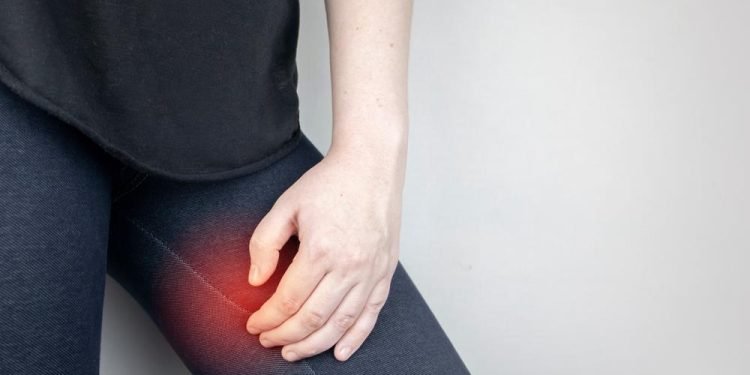Friends don’t let friends skip leg day! Nothing says fit and healthy like some powerful thighs, but it’s not all about aesthetics. Having strong thighs, specifically your inner thighs, can help you up your fitness game and even prevent injury. So, how does one achieve this?
In this article, let’s talk about the anatomy of the thigh muscles, why you should build up your inner thighs, how to prevent injury, and some basic exercises for the inner thighs to help you get started.
Anatomy of the Thigh Muscles
Did you know that our thighs have some of the largest muscles in the body? They also hold up most of our body weight and help to keep our legs and hips in alignment so we can stay balanced when moving around or doing any sort of strenuous exercise. They can be divided into three different categories which are the anterior, medial, and posterior groupings, but in the fitness community, the parts of the thigh are simply referred to as the outer or inner thigh muscles.
The anterior muscles consist of:
- Iliacus
- Pectineus
- Psoas Major
- Sartorius
- Vastus Lateralis
- Rectus Femoris
- Vastus Medialis
- Tensor Fasciae Latae
The medial muscles consist of:
- Adductor Longus
- Adductor Magnus
- Adductor Brevis
- Gracilis
- Obturator externus
The posterior muscles consist of:
- Biceps Femoris
- Semitendinosus
- Semimembranosus
The adductors longus, magnus, and brevis, as well as the gracilis, and obturator externus, are all considered part of the inner thigh and extend from the pelvis to the femur also known as the thigh bone.
All of these muscles are designed to bring the thighs together as well as provide stability during movement such as walking running and other exercises.
Why the Inner Thigh?
So why should you emphasize particular focus on the inner thigh muscles? As previously stated, the inner thigh muscles are not only responsible for the adduction movement of bringing the thighs together. They are also important stabilizing muscles which are vital for the strength of our hips and mobility during daily activities including strenuous exercises like running and jumping.

In addition to building muscle and shaping your legs for aesthetic purposes, strengthening your inner thighs will help prevent knee pain. Our knees are only able to flex and extend, but our thighs can rotate in all different directions from the hip. It is important to have enough strength in our hip muscles as well as our inner thighs to stabilize the leg.
Another aspect many overlooks is that our thigh muscles have a direct impact on how we stand. This can lead to poor posture causing you to put more weight on the inner or outer part of your foot rolling your ankle one way or another as you walk. This is sometimes the cause of sprains and other foot and ankle injuries. If your inner thighs are weak and cannot handle the strain of intense exercise or the demand of daily activities this could lead to some serious problems.
How to Prevent Injury
If you are working on the inner thigh muscles in order to improve performance in other exercises or you plan to start incorporating inner thigh exercises, you should also be taking precautionary measures to prevent injury to these muscles as well. A few good practices include warming up your thigh muscles before beginning your exercise routine. Light jogging or stretching is a common way to accomplish this.
Another rule of thumb is to ensure you are wearing supportive shoes that fit and are comfortable. If your shoes are too loose or don’t fit right this will not only make your workout miserable but could lead to injury as well. In addition to this, be sure to increase weight and intensity slowly and don’t overdo it too quickly.
Another tip is to listen to your body. If you are feeling sharp pain or tightness in your inner thighs, stop what you are doing. This doesn’t mean to stop exercising the inner thigh muscles altogether though. You should stay consistent in your workouts, just take it slow as you gradually increase the weight or intensity of your workouts.
Basic Inner Thigh Exercises to Get You Started
Here are a few basic exercises you can start with that target the inner thighs:
- Inner Thigh Raise – This movement is a great low-impact exercise that specifically focuses on the inner thighs. Though you will be laying down, this exercise is quite effective at building the inner thigh muscles.
- Inner Thigh Heel Pulses – This is another excellent movement that is low-impact and requires you to be laying on the floor. It not only works the inner thighs but the glutes and core as well really packing a punch.
- Sumo Squat – This movement is a variation of the traditional squat. The difference, in this case, is that you would be taking a wider stance, thus targeting the inner thigh muscles.
- Plié Squat – This is another variation of the squat. With this movement, you would take an even wider stance that the sumo squat. This exercise has a multitude of benefits such as improved range of motion and balance as well as strengthening the inner thighs and calves.
- Reverse lunge – This exercise is a timeless classic. Similar to the traditional lung, this movement strengthens a multitude of muscle groups including the thigh muscles such as the quadriceps and adductor muscles. On top of this, it is great for building the glute muscles as this is one of the primary muscles it affects.
- Lateral Lunge – The lateral lung is an excellent exercise to target the inner thighs. It’s also a nice change to the typical forward and back motion of other common leg exercises such as the previously mentioned reverse lunge. In addition to working the inner thighs, this movement also hits the outer thighs as well as the glutes, quads, and hamstrings.
Conclusion
In summary, There are a lot of muscles that make up our thighs and they are all important, but if you want to improve posture, balance, and stabilization, incorporate some inner thigh exercises into your fitness routine. Strengthening your inner thighs can help with improved performance, pain prevention of the knees and ankles, and injury prevention as well. It is important to also take measures to prevent inner thigh injury as you build strength in these muscles and take it slow when it comes to increasing weight or intensity in your exercises.












